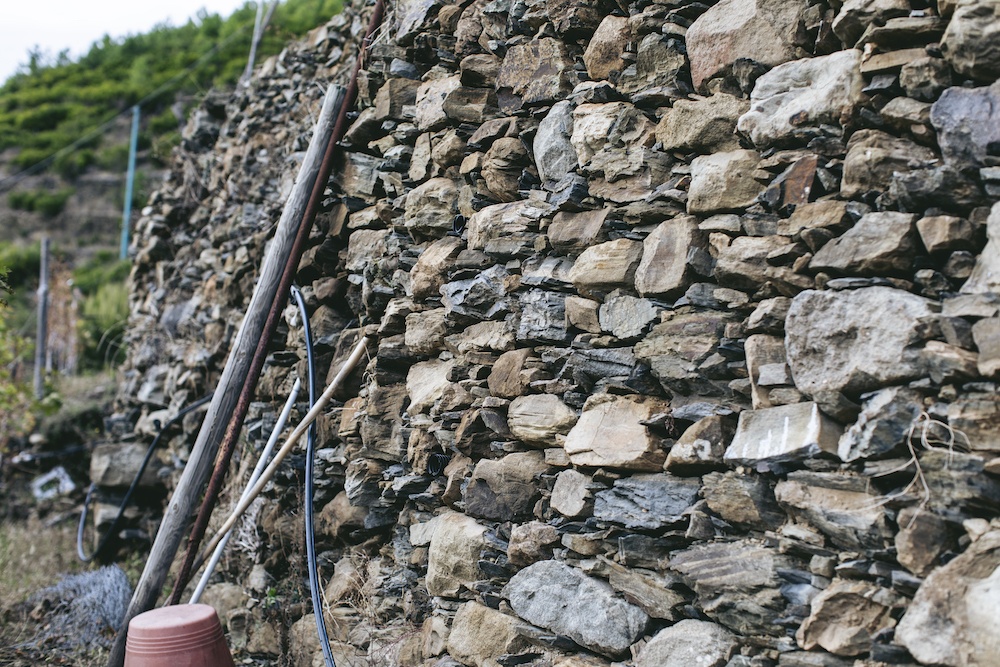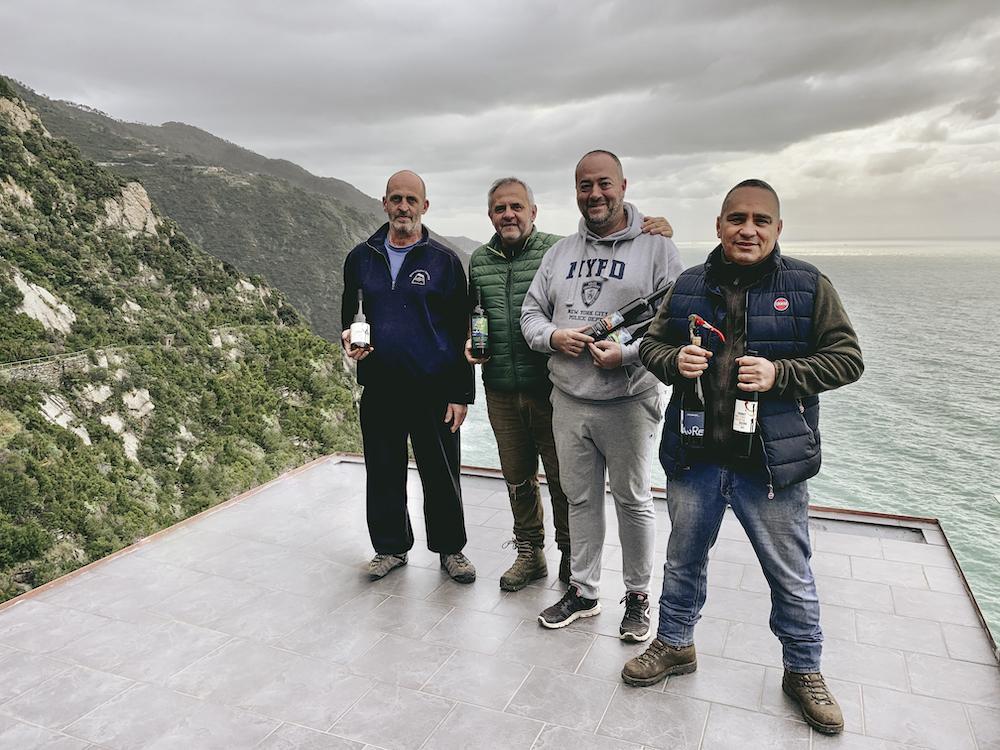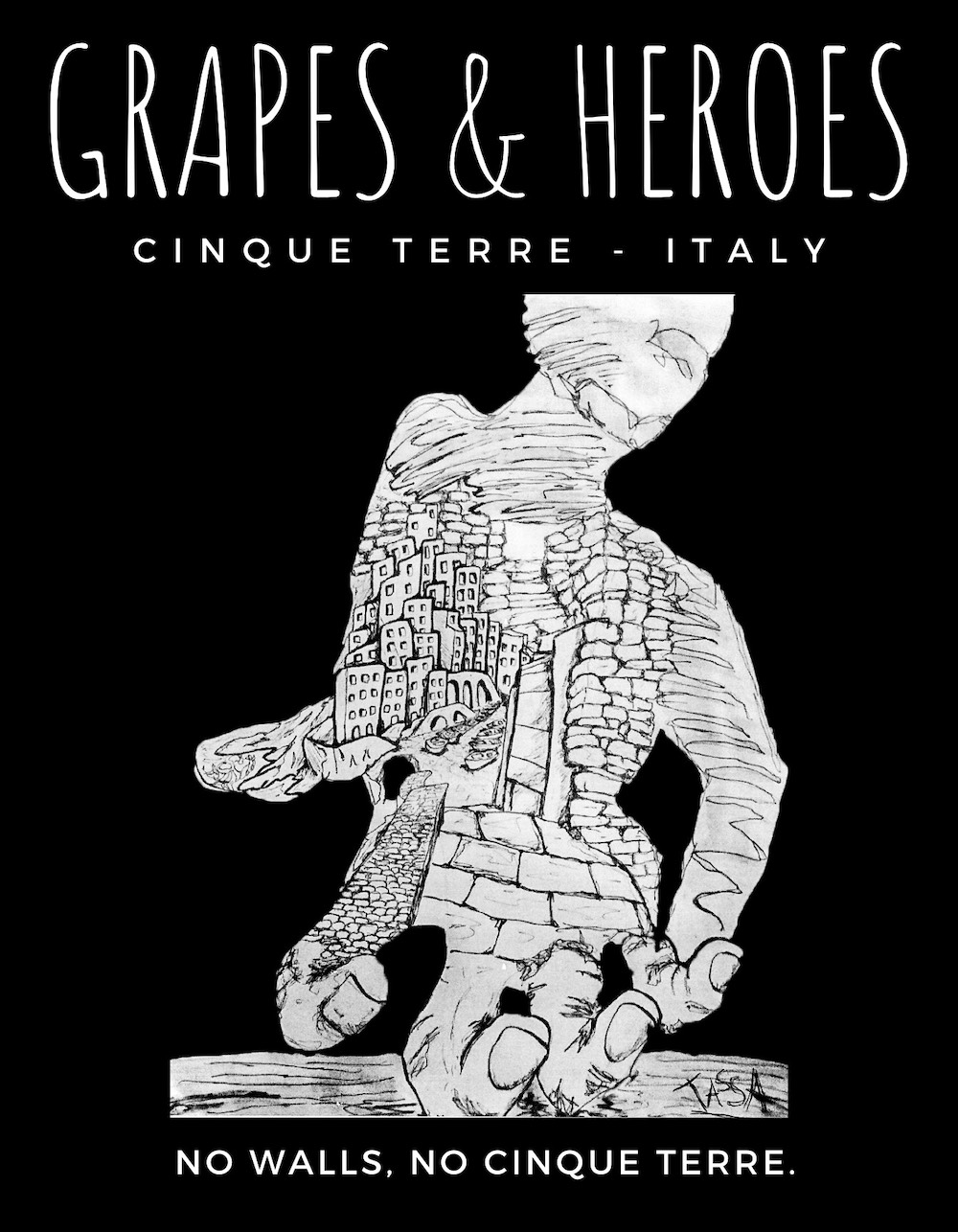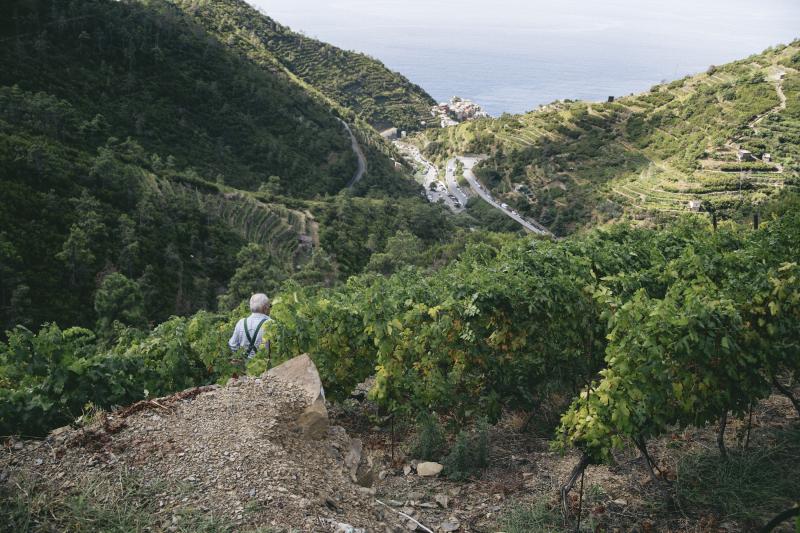The Cinque Terre—five pastel-colored villages that sit on a rugged 12km stretch of the Italian Riviera—are loved the world over.
The villages are incredibly picturesque and their iconic photos have made them a social media darling, adding to their popularity. The Cinque Terre receives an estimated 3.5 million visitors per year. With just 3,646 local residents, these tiny, geographically restricted villages can feel packed with tourists in peak-season.

Both locals and in-the-know travelers head up the steep hillsides of the Cinque Terre to less trodden territory for a breath of fresh air, well away from the masses. It is here that one can find the heart and legacy of this region: 3,560 miles of dry stone retaining walls that horizontally stripe the land.
These walls create terraces and essential space for agriculture—primarily vineyards but also olive and lemon groves. The unique landscape of the Cinque Terre, with its stunning natural beauty enhanced by man’s intervention a thousand years ago, was recognized in 1997 as a UNESCO World Heritage Site.

The role of the dry stone walls goes beyond agriculture and visual appeal, the walls are the backbone of this fragile territory; they provide structural integrity and help keep landslides at bay.
However, these walls are not immune to extraordinary meteorological events.
“The last ten years have shown how the climate is changing, we have periods of drought followed by periods with violent downpours,” says Heydi Bonanini, a Cinque Terre vintner. “This is incredibly problematic for us because our walls are unable to filter massive amounts of water.”

Fall of 2019 was a particularly challenging season for the Cinque Terre.
In a span of just three months a total of nine storm warnings were issued that required the closure of local schools and businesses: the risk of landslides and flooding are a very real and serious threat to the area.
Local winemakers, the de facto guardians of the land, kept a watchful eye on the dry stone walls. These retaining walls, which are built using an ancient technique that employs dirt and gravel rather than mortar or cement, are permeable and constructed to allow the passage of water between the stones. However, when an exceptional quantity of rainfall exceeds the wall’s filtering capacity, pressure builds and overwhelms the wall—causing it to collapse.

In general, 2019 was an exceptionally wet year. But perhaps the most telling data is that we received more rainfall in three months than the amount in a typical year!
To give you an idea of the average annual rainfall in Riomaggiore is normally 900mm. However a weather station in Riomaggiore recorded the following rainfall data: between February 5, 2019 and February 5, 2020: 1405mm (505mm above the annual average). For the months of October, November and December 2019 there was 905mm alone.
The Cinque Terre region was already saturated and vulnerable following months of incessant rain when a powerful storm hit the area on December 20, 2019. The storm proved to be the coup de grâs for innumerous dry stone walls. Winemakers sounded the alarm and spread the news to the community. The Cinque Terre National Park, recognizing the urgency of the situation, scrambled to aid the winemakers and began accepting applications for a wall building relief fund. Unfortunately, on February 5, 2020, a legal hiccup sent the funding back to the drawing board.
A group of Cinque Terre winemakers has now turned their attention to an alternate form of fundraising to rebuild the walls in their vineyards. Four winemakers from the Comune di Riomaggiore answered an open call to participate in a social action crowdfunding campaign called “Grapes & Heroes.”

The campaign, which launched on the Indiegogo platform last Friday, February 14 will run for just 40 days. It was created by a group of international volunteers that were united and spurred to action by their love for the Cinque Terre.
Those wanting to support the winemakers in their quest to rebuild the dry stone walls can make a contribution and receive in return Cinque Terre wines, Grapes & Heroes merchandising, unique experiences in the area and much more.
The winemakers are optimistic that the global community will recognize the urgency of their appeal for assistance and respond positively.
The destiny of the walls—and ultimately the Cinque Terre—hangs in the balance.





